Our complete guide to discover and visit Reunion Island
It's decided, your next vacation destination will be the Reunion Island, and your goal, to discover and visit the intense island! How to visit Reunion Island? Before embarking on this incredible adventure, find yourself in this Reunion Island Guide, all the useful information for your trip. Where is the meeting located and where does this island come from? Its climate? When and how to get there What to do once there and or sleep ? Prepare your stay in Reunion by following all our advice and tips and discover this land of mixed race, in our Reference travel guide on Reunion Island.
Our article has been written in a specific order for a better reading experience, but if you have limited time to read our comprehensive guide to Reunion, you can jump directly to the section and topic you desire through the summary. below, we wish you a good reading to discover and visit Reunion! If you prefer a paper guide, we recommend the Backpacker's guide 2021/2022 on Reunion Island
Guide du Routard Réunion 2021/2022
Summary
Guide - Where is the meeting located?
Small tropical island of France of 2,512 km2, Réunion is located to the southwest of the Indian Ocean and to the east of Madagascar and the African country of Mozambique. It belongs to the Mascarene archipelago with its little sisters Mauritius and Rodrigues Island in the southern hemisphere. 9,300 km from Paris and 800 km from Madagascar as the crow flies, Reunion Island has inherited the nickname of the intense island. Nickname that fits him like a glove and you will understand why as you read on. Where is Réunion on a map?
Guide - What time is it in Réunion?
Réunion is in the UTC + 4 time zone. It is therefore four hours longer than the UTC time of the Greenwich Mean Time. It has a two-hour shift with Paris and mainland France during the southern winter and a three-hour shift during the southern summer. The time change is made on the same date as the summer and winter time changes in mainland France, at the end of October +3 hours and at the end of March +2 hours. View the current date and time in Réunion below.
Guide - Where does Reunion Island come from?
Birth of Réunion
Reunion, as we know it today, was born from an alliance betweene Piton des Neiges and Piton de la Fournaise. On a hot spot located on the earth's crust at the bottom of the Indian Ocean, the two volcanoes are developing. 3 million years ago, a large-scale volcanic activity caused the Piton des Neiges to spring from 4,000 meters deep from the ocean to over 3,000 meters above sea level. 2.5 million years later, it is Piton de la Fournaise's turn to point the end of its crater. Their various eruptions and erosion will come to shape the island of Reunion, giving birth to its steep relief so particular.
Guide - Presentation of the Meeting
The Hauts Reunion
The heights of Reunion Island quite simply correspond to what is not on the coast, so in the mountains on more or less steep reliefs. The island being the fruit of two volcanoes, the Hauts Reunion therefore represent approximately 80 % of the territory. On one side we find the Piton de la Fournaise covering 25 % of the intense island with 30 km in diameter, made up of the Bory crater and its highest point, the Dolomieu crater at an altitude of 2,632 meters. On the other side, the Piton des Neiges coating 40 % de la Réunion, surrounded by its 3 magnificent calderas that are the Mafate Circus in the north-west, the Circus of Cilaos to the south and the Circus of Salazie to North-east.
Wedged between its two mountain ranges, the Plain of Cafres to the southwest and the Plain of Palmists to the northeast, two lands extremely rich in vegetation separated by the Bellevue Pass. Several forests, including the magnificent FBébour tropical forest, as well as a myriad of pitons, ramparts, planezes or even inaccessible valleys. In order to preserve these extraordinary landscapes and its exceptional biodiversity, Réunion National Park was created on March 5, 2007, covering 42 % of the Reunion territory in 2016. The loop has been closed by Unesco, which includes Réunion on the 1st August 2010 as a world heritage site for its “Pitons, cirques and ramparts”.
The coast of Réunion
Reunion has around 210 km of more or less wide coasts, between 0 and 5 km. The bay of Saint-Paul is the only opening that sinks into the Reunion coast, its borders are rather homogeneous. On the other hand, there is a huge difference between the East coast and the West coast of the intense island. The coast to the west invites you to swim and relax with its sandy beaches, its casuarinas trees and its 22 km of lagoons, such as Saint-Leu beach or even the Hermitage beach. The east coast remains much wilder with a few rare pebble and sandy beaches. Its cliffs and basaltic expanses, sculpted by the lava flows from Piton de la Fournaise, are nonetheless splendid to observe.
Reunion Island owes this atypical physique to its young age, because even if 3 million years seem phenomenal, it is not much compared to its neighbor Mauritius which is approaching 9 million years. This is the reason why beaches and coral reefs are few and must be preserved. To ensure the proper development of the lagoons on the west coast of the intense island, the Réunion marine nature reserve was created in 2007. It starts from Cap la Houssaye in Saint-Paul and ends at the Roche des oiseaux in the Étang-Salé encompassing all the lagoons of the island over some forty kilometers, except that of Saint-Pierre.
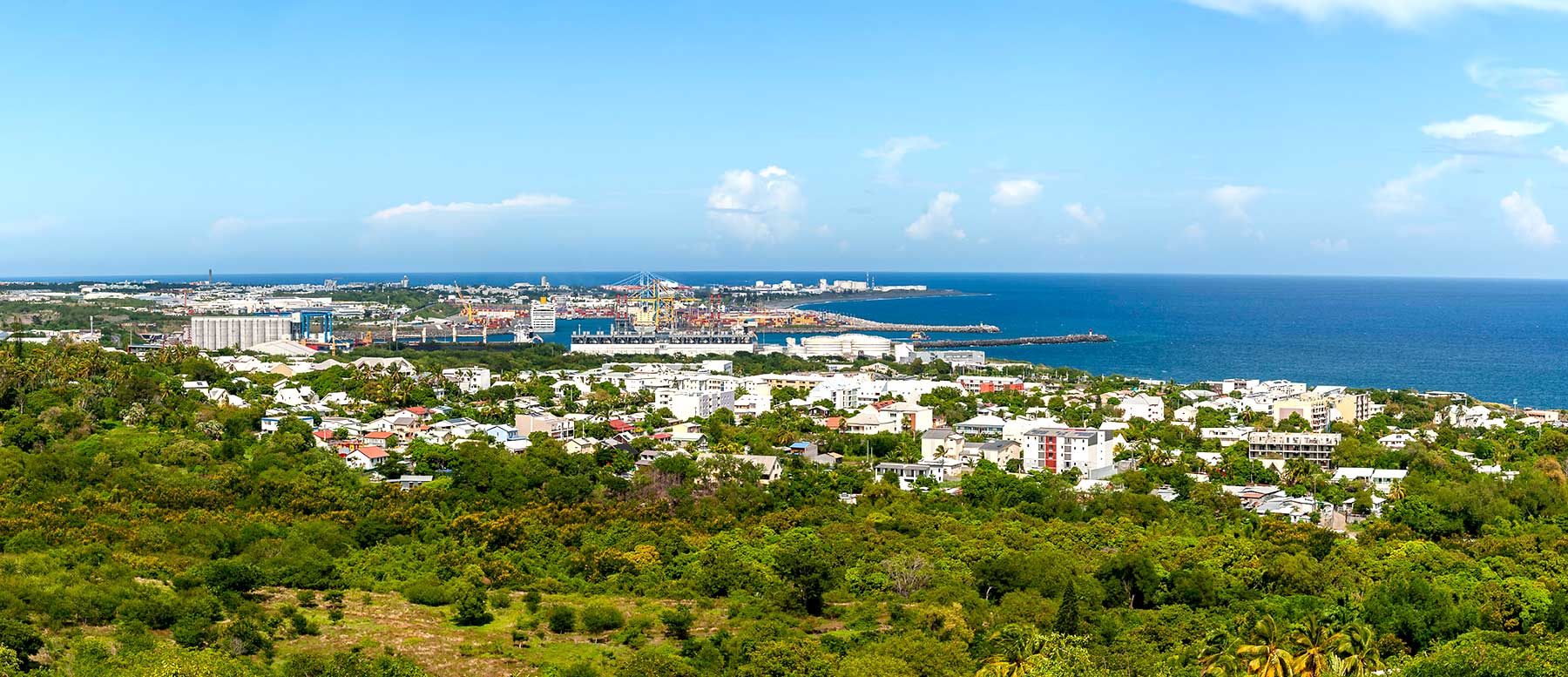
The active volcano of Réunion
If the Piton des Neiges died out over 20 centuries ago, the Piton de la Fournaisehe does not fall asleep on his laurels. According to the volcanological observatory of Piton de la Fournaise (OVPF), it has erupted on average once a year for 2 centuries. No need to worry since this effusive volcano is harmless and offers stunning spectacles to Reunion Islanders, as well as to tourists lucky to be present on this occasion. The intense island thus reaches the dimensions of 71 km long and 51 km wide, occasionally modified by the molten lava which flows into the Indian Ocean.
Reunion map
Discover Reunion with this interactive map of Reunion Island provided by Google map
To find out more about the geography and maps of Réunion.
Reunion in video
Video and drone shooting of the main places to visit and not to be missed during your stay on Reunion Island. You will be able to see among others in this video, Piton de la Fournaise, the circus of Mafate, the Plain of Sands, the Hermitage beach, Belouve, Grande Anse beach, Cap Méchant, the circus of Salazie, the Plain of Cafres, and the Pas de Bellecombe !
Guide - The discovery of Reunion
Discovered by the Portuguese Pedro de Mascarenhas in the 16th century, Réunion is named Mascarenhas, whose archipelago will keep the name Mascarene, but remains uninhabited.
In 1646, the Compagnie des Indes appropriated it in the name of the King of France Louis XIII and left 12 exiles there to test the capacities of human adaptation on the island. The French settled there in 1663 renaming Mascarenhas, Ile Bourbon. They bring with them slaves from Madagascar and Africa, making up 80 % of the population, who cultivate coffee, then sugar cane.
The slaves succeed in finding a common language through song and dance, thus is born the maloya and the sega. Some try to escape bondage by hiding in the reliefs, they are called “the maroons”. Those who get caught are severely punished, whipped, branded with a hot iron, or even suffer the death penalty after 3 attempts to escape.
During the Revolution, Bourbon Island became Reunion Island, then Bonaparte Island under the Empire until 1810 when the English occupied the island for 4 years and gave it back to the French. It definitely becomes the island of Reunion again.
On December 20, 1848, slavery was finally abolished in Reunion, but to compensate for the lack of manpower, a new concept was born, indentured labor. A 5-year employment contract binding a foreign “employee” to work on an owner's land in return for remuneration.
This is how workers from India, China and Madagascar arrive who unfortunately realize too late of the deception, slavery disguised under the cover of a contract. Wage amounts are rarely respected and workers are still as poor as when they arrived or accumulate debts. The engagement ends on November 11, 1882.
Despite the dark episodes in its history, Reunion has been able to come together and create a common culture while respecting the traditions and beliefs of each. A model of tolerance and good manners together.
To learn more about the history of Réunion.
Guide - Climate and weather of Réunion
As Réunion is part of the southern hemisphere, the seasons are reversed compared to the metropolis. There are two seasons:
The southern summer from November to April when temperatures on the coast during the day are between 30 and 40 °. The heavy rains last a short time, but are regular, particularly from January to March. It is often during this period that the Reunionese people benefit from the freshness of the Hauts.
The southern winter from May to October with lower temperatures between 22 and 24 ° on the coasts which remains very mild and little precipitation. If you plan to explore the Hauts, take a warm outfit with you, temperatures can drop to 5 ° to 15 ° at the best of the day.
At the edge of the ocean, temperatures vary very little between night and day, unlike the relief and the water in the lagoons remains at an average temperature of 22 ° throughout the year. You will therefore hear about the different microclimates of the island, effect of its position in the Indian Ocean and its reliefs whose altitude varies from 0 to 3,070 meters.
Let's cut Reunion Island in two, go slightly west of Saint-Denis to east of Saint-Joseph, passing right in the middle of the Piton des Neiges. You get to the east the windward coast with its trade winds and a humid climate and to the west the leeward coast sheltered from the mountain ranges with a drier climate.
The leeward coast has all the assets to please, less rain, more sunshine and all the beaches where you can swim. Let us also add the cirques of Cilaos and Mafate to the indescribable landscapes and you have an idyllic portrait of this part of the island. But who says idyllic, also says very crowded especially on weekends and during holidays, and although its climate is milder, the nights remain cool in the Hauts even on the leeward coast.
The windward coast, for its part, does not demerit. The greater rainfall in the Hauts also makes it a fertile land, as evidenced by the Salazie cirque or the Bébour forest and its lush vegetation. The east coast nevertheless enjoys the same sun as the west coast all year round and the temperatures are mild.
This is also Reunion, a diversity of climate. It's up to you to choose yours depending on where you want to go and when you want to go. Good thing, it's time to talk about it!
To see the weather forecast and detailed weather maps for Réunion and the Indian Ocean
Climate and temperature in Réunion
Guide - When to go to the meeting?
Best time to go to Reunion Island?
Obviously, you are wondering what is the best time of year to go to the intense island and it is legitimate.
From a meteorological point of view, the best period to enjoy your trip is undoubtedly the southern winter from May to October during the dry season. Pleasant temperatures without being too high, scant rains, the perfect time for outdoor activities. You can possibly spill over into November, the rainy season not being an exact science, to admire the sumptuous waterfalls of Réunion. Fall in awe of Niagara Falls from Sainte-Suzanne or the Grand Galet waterfall and its countless waterfalls.
Rainfall and precipitation in Réunion
Beyond the rain and the good weather, if you have the choice, avoid leaving in July and August during the school vacation period. You will meet a lot of tourists and of course the locals on vacation. We also advise you to plan your activities outside weekends and public holidays or to opt for less popular leisure activities. If you are going to go to the beach on a Saturday and enjoy the picnic areas you will need to be there before sunrise.
Flights to the meeting
No worries, you will find flights all year round to get to Reunion. Several companies offer direct flights via Paris airports and one company from Marseille. Leaving from another provincial town, there will always be a stopover in Paris. The direct flight time from Paris is approximately 11 hours.
Airlines serving Réunion
- Air Austral
- Air France
- Air Mauritius
- Corsair International.
- XL Airways France.
- French Blue
- Air Madagascar
When to book your plane ticket to Reunion?
For reservations, there is no need to go months and months in advance, unless you are going between July and September during high season and around Christmas time. However, do not forget that you still have all the logistics of accommodation, activities and possibly the rental of a vehicle which must correspond to your travel dates. We advise you to take your plane ticket first to define the period when you are leaving and be able to organize the rest.
Tips for booking your flight to Réunion cheaper
The flight to Reunion will be your biggest expense. A return trip for one person costs on average between 500 and 600 €, but depending on the month and day of departure, depending on the day of the week you book and depending on the airline, prices can vary from one to two.
To be sure to find the cheapest flights to Reunion, we recommend Kayak, Skyscanner and Momondo
As such, here are some tips to make it as cheap as possible:
- prefer a departure from Paris, flights from the provinces are often more expensive than going to Paris by another means of transport;
- your tickets will cost you more in July, December and August, the most advantageous month is September;
- Plan to leave and return on a Tuesday, there can be up to € 50 difference per ticket between Tuesday and Saturday;
- Get the best rates by booking 2 to 3 months in advance;
- Book your plane ticket on a Monday;
- Compare airline fares and take a good look at what's included in that fare. Some companies at first glance seem competitive, but do not cover food, do not include checked baggage or reduce their after-sales service to the strict minimum. Be vigilant to avoid unpleasant surprises.
Reunion's airports
You will have the choice between 5 airlines to reach the airports of Réunion: XL Airways, Air France, Air Austral, Corsair and French Bee. Depending on your destination, you will land either in the north of the island at Réunion Roland Garros airport in Sainte-Marie, 10 km from Saint-Denis, or in the south of the island at Pierrefonds airport. in Saint-Pierre.
Open since 1929, Roland-Garros airport is the main airport of the intense island. It was renamed Roland Garros in honor of the famous Reunionese aviator of the same name in 1994. A real strategic economic point of Reunion, it is also the meeting point for laughter and tears, departures, meetings and reunion. Upon your arrival, you will be able to take advantage of its many services, shops, ATMs, free WiFi, restaurants, bars and of course means of transport.
Newer and smaller than its counterpart, Saint-Pierre Pierrefonds airport was created in 1998 by the will of communities to develop the economy and tourism in the South of Réunion. Even if it is smaller, it is nonetheless welcoming and modern, free WiFi, shops, cafeteria, travel agencies, it offers similar services to Roland-Garros airport.
Practical information and contacts of Réunion airports.
Guide - Tourism in Réunion
Evolution and figures of tourism in Réunion
Tourism in Reunion is a bit, I love you, neither do I. Having a major role in Reunion's economy, tourism experienced a sharp drop in 2005 and 2006 following the chikungunya epidemic. Starting again for the year 2007, it decreases from year to year from 2011 following the shark crisis, a resurgence of attacks on the west coast of the island intense. It was not until 2015 that Réunion again attracted visitors and tourists flocked a little more each year.
Figures and Evolution of the number of tourists to Reunion Island from 1995 to 2020
We can notice on the previous statistics graph that the entry of Réunion National Park to UNESCO World Heritage in 2010 allowed tourism to exceed its glass ceiling of 420,000 annual tourists, never exceeded before. The drop in tourists due to shark attacks that began in 2011 was followed by a good recovery in 2016. In 2019, more than 600,000 tourists visited Reunion Island ...
Who are the visitors to Réunion?
Unsurprisingly, metropolitan residents account for almost 83 % of tourists from Réunion and just behind with 6 % of visitors, our neighbors from Mauritius, between the island, we stick together. The remaining 11 % are dispatched in Europe and around the world. 90 % of them come for pleasure and among these tourists, 40 % visit their family and friends and 60 % to discover and visit Reunion Island and satisfy their curiosity. And what everyone agrees is the satisfaction felt by all tourists who come to the meeting at over 98 %.
Breakdown by origin of tourists to Réunion
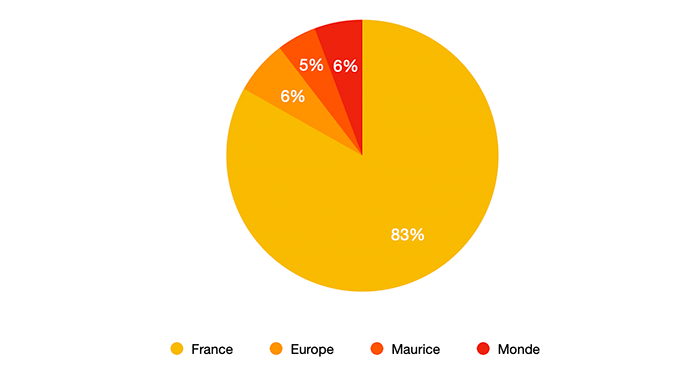
Wondering why tourists come and go to the intense island? Find out what makes Reunion Island tourism successful.
Guide - What to do in Reunion?
Reunion has the great advantage of being able to offer aquatic activities thanks to the Indian Ocean and its rivers, mountain activities thanks to its Pitons and activities aerial whose landscape will leave you speechless. All this in a small area that will allow you to initiate or deepen the practice of a lot of activities in a short time, a chance that we do not have every day. Find all the activities available on the intense island.
To see all the activities on Reunion Island
Guide - What to see at the meeting?
The north coast of Réunion
Saint-Denis is not the capital of Réunion for nothing. Take half a day to visit the city and take some nice shots of its buildings and monuments. Its Gothic-style cathedral, the State Garden and the history museum natural to learn more about the flora and fauna of the intense island or the Tamil Kali Kampal Temple. You will find a high concentration of shops, but rest assured, they are present everywhere on the island.
Obviously, the north of Réunion is not limited to Saint-Denis. Direction Sainte-Suzanne where you can discover the spectacular Niagara Falls. It is possible to reach it on foot from the car park in the sugar cane fields located less than a kilometer away. You also have the option of canoeing or canyoning by the Sainte-Suzanne river. Relax and refresh yourself in the Hauts basins, the most famous of which is the Boeuf basin. Visit the large Creole villa at Domaine du Grand Hazier surrounded by endemic trees, palm trees, fruit trees and its Vanilla plantation.
The west coast of Réunion
The west coast of Réunion is by far the most lively and touristic part of the island. With its beaches and lagoons, its markets, its varied activities and its dry and mild climate, it attracts many visitors.
The beaches of Boucan-Canot and Roches Noires are very popular for their aquatic activities thanks to the presence of anti-shark nets. There, you can indulge in surfing, sailing, kayaking, diving and hopefully whale and dolphin watching. The other beaches such as the Hermitage beach, the Étang-Salé beach and its chasm or the Saint-Leu beach are naturally protected by the lagoons which border the west coast in places. You can swim there in complete safety.
Fairground markets and bazaars are also numerous on the island, if you like this atmosphere, you absolutely must go to the Saint-Paul market which is held on Fridays all day and Saturday mornings. 300 traders offer for sale fruits, vegetables, meats, clothes and handicrafts, get there early in the morning to enjoy the best goods.
Do you prefer peace and nature? Take a walk around the 3 pools. The Malheur basin, the Aigrettes basin, the Cormorant Basin and its waterfalls await you for a moment of relaxation near Saint-Gilles-les-Bains. Explore the Forest of Tévelave from the town of Avirons and recharge your batteries with the Tamarins des Hauts, birds and butterflies.
The south coast of Réunion
Discover the wild south of the intense island, towards the Cap Méchant in Saint-Philippe! There, you will witness the spectacle of the raging Indian Ocean crashing into the sheer lava cliffs. Learn more about the plants and flowers of Reunion in the garden of the Mare-Longue forest.
Refresh yourself by going to the beaches in the south of Réunion. Manapany beach and its natural basin. Grande Anse beach and its artificial pool very popular with picnickers from Réunion. Saint-Pierre beach, the only beach in the south with a lagoon where you can practice diving, snorkeling or kayaking.
Events not to be missed:
- the holiday of vacoa in August in Saint-Philippe;
- the Sakifo Musik Festival the first week of August in Saint-Pierre;
- the departure of Grand Raid in October in Saint-Pierre.
The east coast of Réunion
Just after the Piton de la Fournaise, walk along the east coast of the intense island and stop at Piton Sainte-Rose to appreciate the Anse des Cascades falls and its coconut grove. From there, a short walk will take you to visit the'' Notre-Dame-des-Laves miracle church.
Passing through Sainte-Rose, you will see the Suspension Bridge of the Rivière de l'Est which once allowed traffic between Sainte-Rose and Saint-Benoît. It is replaced today by a new bridge that you will cross to visit the'Church of Saint Anne, one of the most beautiful religious monuments in Réunion, classified as a historical monument since 1982.
To end this exploration of the eastern coast in style, take advantage of the many Reunion basins nearby. The Blue Basin, a few minutes from the Sainte-Anne Church, and its natural swimming pool which invites you to swim. The Peace Basin hidden in the sugar cane fields of the town of Bras-Panon and its descent to the sea basin where you can learn to canyoning or go on a beautiful hike.
Attend the Tamil feast, the Dipavali in October or November celebrated in several places of the island of which Saint-André is the most representative.
The circus of Cilaos
To access the Circus of Cilaos you will have to travel the road with 400 turns which already offers superb panoramas of Reunion and on site, there is no shortage of activities. Go pedal boat or boat on the Mare de Jonc. For sports enthusiasts, get started in rock climbing, tree climbing, canyoning or go on hiking trails. Taste Cilaos lentils or relax in the thermal baths for a moment of relaxation and well-being.
For a breathtaking view of the caldera and its islets, go to the Makes window by car or try a new experience with the quad bike, a 4-wheeled mountain bike. Another platform that will allow you to embrace the landscape of the Cirque de Cilaos, Dimitile. Take the opportunity to make a detour to the brown camp a few kilometers away and immerse yourself in the history of slavery in Réunion.
And don't miss the lentil festival every October in Cilaos!
The circus of Mafate
The Circus of Mafate is made for lovers of hiking and nature. You can only access it by force of your legs or by helicopter, no access to traffic is possible. The caldera of Mafate is 140 km of marked trails, 30 possible hikes and many lodgings, you can stay there and talk to the inhabitants of the different islets. A quiet place where you will have plenty of time to enjoy the benefits of nature.
For a breathtaking overview of Cirque de Mafate, go to Maido, the second most popular observatory for tourists in Réunion after the No Bellecombe. Not far from the viewpoint in the direction of Saint-Paul, you can practice many activities, such as summer sledding, a first flight, mountain biking or even a horse ride. You will also get stunning views of the caldera with a paraglider flight from the village of Dos d'Âne.
The circus of Salazie
Go to Circus of Salazie from the road from Saint-André. The caldera is one of the places of the intense island that receives the most precipitation and nature gives it back with lush green vegetation. At the entrance to the circus, you will come face to face with the Cascade du Voile de la Mariée de Salazie (beware, there are several of the same name in Reunion).
On site, you can enjoy the typical Creole architecture in the village of Hell-Bourg, classified as the most beautiful village in France. Visit the Folio House, 19th century Creole hut and its Reunionese garden and listen to the sound of traditional musical instruments at the Maison Morange museum.
Like the other two calderas of the intense island, beautiful hikes will take you to the geological curiosities of Reunion in a wild and unspoiled nature. Enter the Bélouve Forest, in the midst of its endemic flora and fauna, and go to the Bélouve viewpoint where its lodging is located. Let yourself be hypnotized by the impressive Trou de Fer waterfall, a fall over 300 meters high which makes it one of the largest waterfalls in the world. You can approach it by a hiking trail from the cottage.
Don't miss the Chouchou party in June in Salazie.
Piton de la Fournaise and its surroundings
The Piton de la Fournaise and its surroundings are the most visited places in Réunion. And for good reason, with more than 30 hikes, mountain biking trails and scenery that you will not find anywhere else, the place is seductive.
Cross the Plain of Sands towards the volcano, a Martian landscape of cooled lava wavering between red and gold. You will arrive at No Bellecombe, the most frequented point of view of the intense island, where you can admire the Fouqué enclosure below, the most recent circus of Piton de la Fournaise. It is also the starting point for several hikes.
Go to the Fouqué enclosure and leave your mark on the ancient lavas of the Grand Brûlé which regularly changes profile according to the eruptions of the volcano. If you don't like to walk, you can also contemplate it from the lava route without moving from your vehicle.
Take the path that leads to the top of the mountain of fire. Once at the top, take the opportunity to indulge in caving and enter the bowels of the volcano through the lava tunnels.
Between the two Pitons of Réunion
Between the two Pitons, find the two plains with generous and vibrant vegetation.
The Plain of Palmistes welcoming the Bébour-Bélouve Forest where birds, flowers and trees endemic to Reunion Island coexist. You can try your hand at rafting and canyoning in the Marsouins river or hiking. Ride a horse and walk around the high altitude volcanic lake of the intense island, Grand-Pond. Tackle the sumptuous, but difficult canyon of Takamaka, only for experts, and explore its waterfalls.
La Plaine des Cafres, the most important agricultural and breeding land in Réunion, home to Bois-Court and its Belvédère. Discover the Waterfall of the Veil of the Bride of Grand Bassin, go to the village, take a bed and breakfast and discover the traditions of Reunion in this haven of peace devoid of technology and electricity. Before going to Bois-Court, take a detour via the Museum of the City of the Volcano and deepen your knowledge of volcanism and the creation of Reunion Island.
Events not to be missed:
- The Festival of Goyaviers between May and June at the Plaine des Palmistes;
- Honey Green in January at the Plaine des Cafres;
- Anthologies in October at Le Tampon.
The Piton des Neiges
The rise of Piton des Neiges is of course the main attraction, but you will have to be athletic enough to take on this sleeping giant. You can reach its summit by 3 trails, we have classified them in order of difficulty from the most difficult to the easiest, it is up to you to choose the one most suited to your level.
A short, but very steep hike from Cilaos (7:30 a.m. round trip on average).
A longer trail with less elevation from the Cirque de Salazie (10 h round trip on average).
An even longer hike but more accessible from the Plaine des Cafres. (11:30 a.m. round trip on average).
If that seems too difficult for you in a day, you have the option of sleeping at Caverne Dufour, a secluded lodge near the top of Piton des Neiges. It offers a catering service, showers, toilets and dormitories.
To see the main places to visit in Réunion
Guide - What do we eat in Reunion?
It is impossible to evoke the intense island without speaking of the fruits of Reunion and its Creole specialties. A journey of the senses that makes your mouth water. The mix is not only cultural in Reunion, it is also culinary. It is a cuisine from the four corners of the world combining meat or fish, spices, vegetables, seeds, rice and peppers for those who appreciate it. Discover some traditional Reunionese dishes.
Sunday picnics will be a good opportunity for you to taste Creole cuisine, a real moment of sharing for Reunion Islanders. In the pots slowly cook over wood fires, curries and rougails emblematic of Réunion. You can also taste them in the various restaurants on the island.
To discover the dishes, dishes and cuisine of Réunion
Guide - Where to sleep in Reunion?
Your type ofaccommodation in Reunion will mainly depend on your budget, your comfort needs and where you want to go. Let's take a look at the different accommodations.
Hotels
The hotels are mainly located on the west coast of Réunion. If you are planning to spend your vacation lazing on the beaches, they will be an ideal place to stay and offer incomparable services. Of course, all this at a price, depending on the proximity to the beaches and the standing, the rates vary from 80 to more than 250 € per night.
Airbnb
Airbnbs are a great way to find accommodation in Reunion. Present everywhere on the island, from studios to villas by the sea, you will find something for all budgets. From 20 to over 300 € per day, again it all depends on the location and type of accommodation. Although they do not have the services of a hotel, you can rent at a very good price / quality ratio.
The cottages and guest rooms
Mainly present in the Hauts de la Réunion, the lodges and guest rooms are perfect for people who wish to spend several days in the circuses of the island. For tourists wishing to discover the traditions and customs of Reunion, this is the opportunity for a real moment of sharing with the locals. The prices are between 40 and 100 € per night.
Campsites
Camping in Réunion is the most economical solution, but also the least comfortable. We do not recommend it in the rainy season when it is essential to have a roof over your head. You will also need to find a way to bring back your camping equipment or rent it on site. Count between 5 and 30 € per night depending on the campsites.
Motorhomes and vans
Finally, as we saw above in the section “getting around Reunion Island”, you can choose the motorhome rental option for a trip in complete autonomy.
To see accommodation on Reunion Island
Guide - Going out in Reunion?
Want to go out ? You will find something to please you in Reunion, small restaurants in trendy bars, through clubs or discos, there is no shortage of places of entertainment to go out and have fun in Reunion, especially on weekends on the western part of the island in the city of Saint-Gilles or in the southern part in the town of Saint-Pierre. Also many events are organized at the meeting throughout the year.
Participate in Grand Boucan Carnival in June in Saint-Gilles, in Chinese New Year in January or February which takes place everywhere on the island, at the Chouchou party in June at Salazie, at the Festival of Goyaviers between May and June at the Plaine des Palmistes, Honey Green in January at the Plaine des Cafres, at Anthologies in October at Le Tampon, at the Lentil Festival every October in Cilaos, at Dipavali in October, at the Vacoa Festival in August in Saint-Philippe, at Sakifo Musik Festival the first week of August at Saint-Pierre or at the start of the Grand Raid in October at Saint-Pierre. And let's not forget the Fèt Kaf the 20th celebrating the abolition of slavery in December.
Find all the major events in Réunion here.
To see the Calendar of events and events in Réunion
Guide - How to get to the meeting?
Public transport in Reunion
In Reunion, the most economical solution to get around is public transport. Upon your arrival at the airport, you will find a shuttle almost every hour from 6.30 a.m. to 6 p.m. to take you to the bus station or to the Town Hall of Saint-Denis, or you can take the connections to reach the rest of the island of the meeting. If you arrive outside of these hours, you will need to take a taxi, hire a local VTC, hire a car or have family or friends collect you. Unfortunately applications like Ubber are not yet available in Reunion at the time of writing this article.
1. Network of coaches and buses in Réunion
The yellow coach network is the main public transport network on Reunion Island. It is made up of several networks of different names depending on the region of the island where they operate.
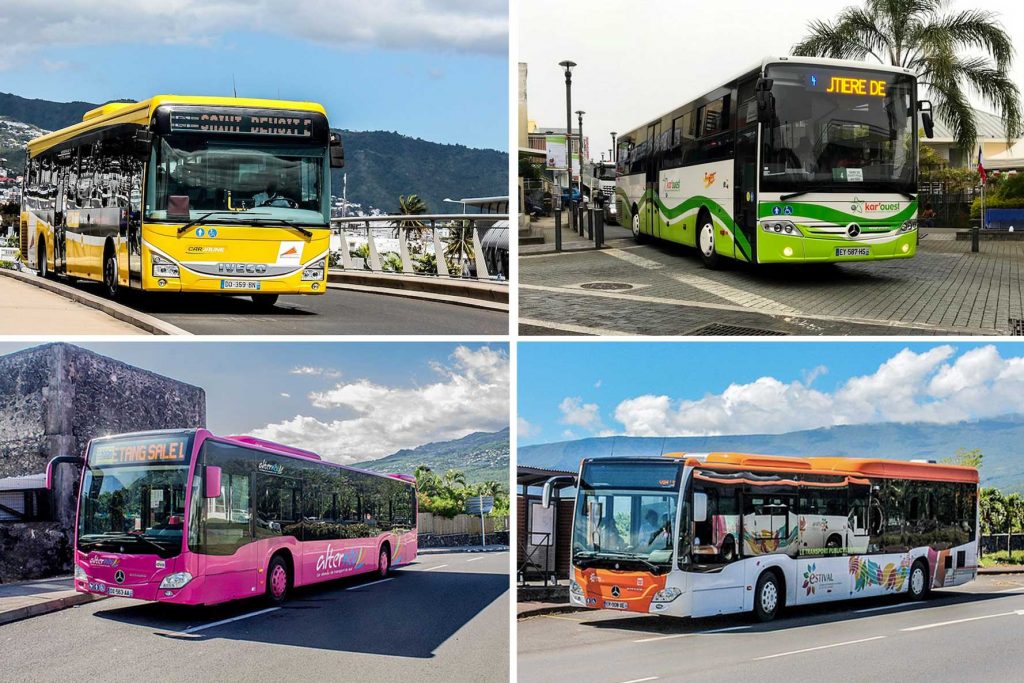
- If you stay in the north:
From the airport shuttle, get off at Saint-Denis town hall where you can take the Network Citalis which serves the north of the island.
- If you are going to the West:
You can get off at the Ocean station and take the Network Yellow Cars which mainly covers the west coast of Réunion, completed by the Network Kar'west which sinks a little deeper into the Hauts.
- If you are going to the South-West:
Borrow the Network alternate to move around the southwestern part of the intense island, one of the lines leads to the Cirque de Cilaos.
- If you are going to the South:
The network Carsud allows you to travel throughout the southern part of the island.
- If you are going to the East:
Eastern Reunion is supported by the Network summery from Saint-André to Sainte-Rose, two routes of which give access to the Cirque de Salazie and the Plaine des Palmistes.
It might sound a little complicated to you, but by preparing well for your meeting stay, you will do just fine. To better visualize all these networks, you will find below the Map of the yellow bus network of Réunion.
Click on the map to see it in high definition.
Warning: Due to situation due to the coronavirus (COVID-19) in Réunion, the wearing of a mask is made compulsory in transport, except for children under 10 years old until further notice. Any offender is liable to a fine of € 135. For the health safety of travelers and staff, vehicles are disinfected daily and physical distancing rules are materialized in stations. The purchase of the ticket at the bus station is made only at points of sale and not on board vehicles. Validation of the ticket is compulsory each time you get into the vehicle.
2. Network of taxis and VTCs in Réunion
Several companies of taxis and VTC exist in Reunion with a price oscillating between 1.5 and 3 euros per km. Taxi is the most expensive means of transport on Reunion Island. You will find very few taxi ranks in Réunion. They are spread over the island, you will generally find them in bus stations and also at the airport. The best thing to do is to book them in advance by email or by phone. You can access all public transport companies in the category public transport company in Réunion accessible by clicking on the link below:
See all transport companies in Réunion
Rentals in Réunion
In Reunion, you can rent all types of vehicles, you will find both the large rental brands that are found all over the world, but also small local businesses. During school holidays, depending on the number of tourists, it may be difficult to find the vehicle you want on site. We therefore advise you to book in advance and preferably before your arrival, to avoid unpleasant surprises.
1. Car rental in Réunion
Car rental is a good option, but is still a big expense, especially if you are going for several weeks. Count between 30 and 50 € per day for a city car with unlimited mileage, the price can be decreasing beyond a week. If you rent your vehicle at Roland-Garros airport in Saint-Denis, add an additional tax of € 35 to your budget. It is possible to save some money by contacting local rental companies for rent your car in Reunion, plutôt qu’à des enseignes nationales et faites toujours attention aux clauses de votre contrat de location particulièrement celle pour le vol. Il arrive que les véhicules soient visités pendant que les touristes randonnent. Nous vous conseillons d’utiliser les comparateurs de prix tels que Rental Car to reserve your car at the best price.
2. Electric bike rental in Réunion
Electric bike rental in Reunion Island can be a good complement to buses if the routes or timetables do not correspond to your desires. Some are self-service, others can be rented directly in the store, it's up to you to define your needs and rent it by the hour, half-day or day. For self-service, prices vary from € 6 for one hour to € 24 for 24 hours, but the stations generally stay in a small area. For shops, count on average € 30 for half a day and € 40 for the day. If you feel the soul of an adventurer, know that some people undertake the tour of the Reunion coast in several days. If you feel like doing the same thing, a 5-day rental costs on average 150 €.
3. Motorhome and van rental in Réunion
Campervans and vans are the all-in-one solution to visit the intense island in complete freedom without asking any questions. The idea appeals to many amateurs and for good reason. No more wondering where you're going to sleep, worrying about schedules, do what you want when you want. You live at your own pace! Travel the roads of Reunion in your motorhome and discover breathtaking landscapes. If you choose this means of transport, find out really well in advance, the companies that rent motorhomes or vans are few on the island. The prices range from 45 € per day for a van with only sleeping arrangements up to around 120 € per day for a comfortable motorhome.
To see all the rental companies in Réunion
Living, expatriating and living in Réunion
Do you dream of immigrating, emigrating and living on Reunion Island? Here is a summary of some advantages and disadvantages to take into account, which could influence your decision before leaving.
Advantages
Good weather and sun all year round, temperatures varying between 18 and 30 degrees from January to December. Breathtaking landscapes, a paradise for hiking enthusiasts, nature lovers, and water sports enthusiasts. A very welcoming Métis population giving rise to a much higher sense of security than in metropolitan France. The pleasure and the sweetness of life. The opportunity to enjoy tropical fruits and vegetables all year round and at reduced prices. An endemic flora and fauna unique in the world. Many nature activities, hiking, diving, paragliding, etc. Proximity of the island to South Africa, Thailand, India, Sri Lanka, Madagascar, Mauritius, Seychelles, Maldives, etc. The possibility if you are lucky to see an erupting volcano, the peak of the furnace erupts almost once a year. Overseas department, in Reunion you are in France. The currency is the euro, the French language, the same salaries as in mainland France.
The inconvenients
The main disadvantages of Reunion Island are the distance from the mainland, 11 hours of travel by plane. The price of plane tickets. The cost of living there. Shorter days, with a sunset around 7 p.m., the season reversed compared to the metropolis. Cyclones and tropical depressions from time to time. Many inaccessible products, no Amazon, no UBBER, rather restrictive public transport, no train, tram or other, in Réunion it is preferable to have a vehicle.
Guide - News, Info and Media in Réunion
Covid-19 in Reunion
Before making any reservation for the meeting, be sure to find out about any cancellations due to the Coronavirus. Follow the evolution of Covid-19 in Réunion on our dedicated page coronavirus.
Coronavirus (Covid-19) statistics in Réunion of the first case on March 11, 2020

Radio in Réunion
Many radio stations exist in Réunion. You will be able to listen on these local radios, the last news, the last tubes of Reunion, Maloya, sega, zook, ragga, soukouss, salsa, and all types of world music, and this on your computer. or your live mobile phone. Here is a small non-exhaustive list of radio stations on Reunion Island
Listen to Reunion Island radios online and live
TV in Reunion
Keep up to date with the latest news in Reunion with Reunion's two TV channels: 1st meeting and Reunion branch. Hurricane situation, evolution of Covid-19 in Reunion, activity of Piton de la Fournaise, local and international news and many other information on life in Reunion.

Guide - Figures and practical information on Réunion
- Surface area of Reunion Island: 2,512 km2;
- capital: Saint-Denis;
- Reunion time: time difference, +3 h during the southern winter and +2 h during the southern summer;
- spoken language: French and Reunionese Creole;
- postal code: 974;
- number of inhabitants: 859,959 in January 2020;
- highest point: the Piton des Neiges at an altitude of 3,071 meters;
- listed as a Unesco World Heritage Site;
- telephone code: +262;
- unofficial flag of Réunion.

Guide - Tips and advice for an unforgettable stay and discover and visit Reunion Island
Practical advice for going to Reunion:
To make the most of your trip to Reunion, here are a few tips:
- prefer night flights, the journey will seem shorter if you are asleep;
- adopt Creole products, imported products are 30 % more expensive;
- plan a route based on the activities you want to do to save money;
- Réunion belongs to those who get up early, whether for hikes, markets or finding a good location on the beach;
- and get yourself an effective mosquito repellent.
Administrative formalities to go to Reunion
For French people and European Union countries, a French identity card, a valid passport or a driving license are sufficient. This rule also applies to minor children of any age. Also note that a minor child who is not traveling with at least one of his two parents must have an authorization to leave the country. For people of another nationality, you must be able to present a passport, a valid residence permit or a French driving license.
Be careful, if you have to transit through a foreign country, be sure to check which administrative documents you need.
Vaccines to go to Réunion
Your health record must be up to date for compulsory vaccination. Apart from that, no other vaccine is to be carried out. For travelers coming from countries where there is a known risk of yellow fever transmission, you will need to present an immunization certificate.
Guide - A brief lexicon of Réunion Creole
“How is it?” = How are you?
“Mi likes a ou” = I love you
“Nar finds” = See you next time
”The good” = It's good it's OK
Have a nice trip to Reunion Island, if you enjoyed sharing this guide to Reunion Island and send it to your friends!

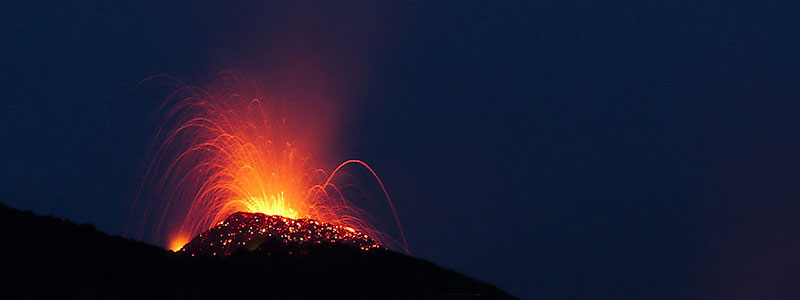

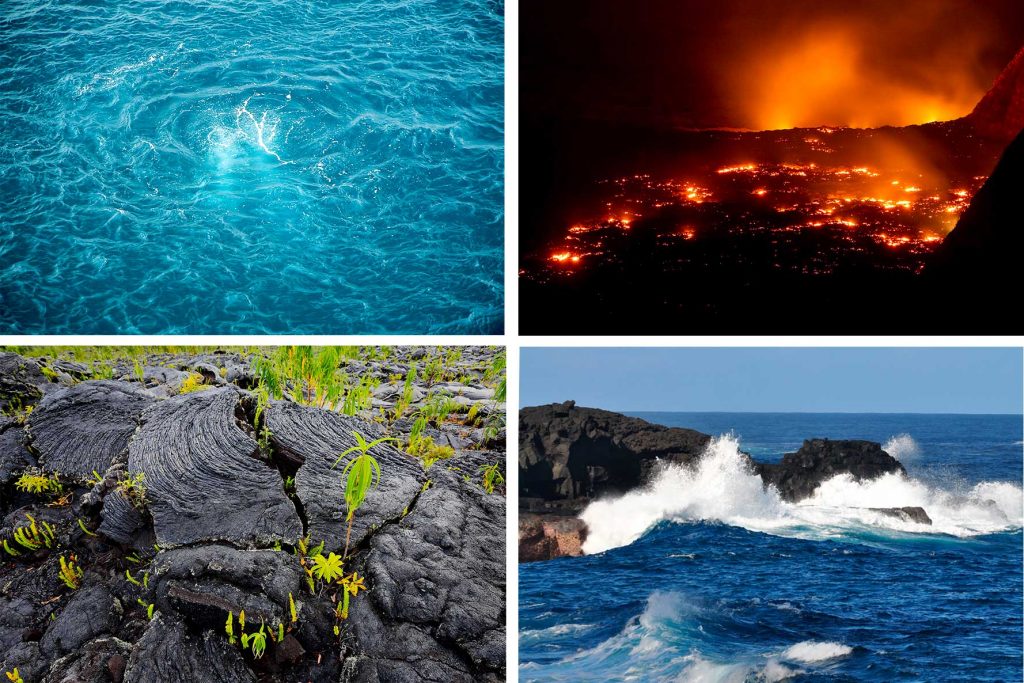
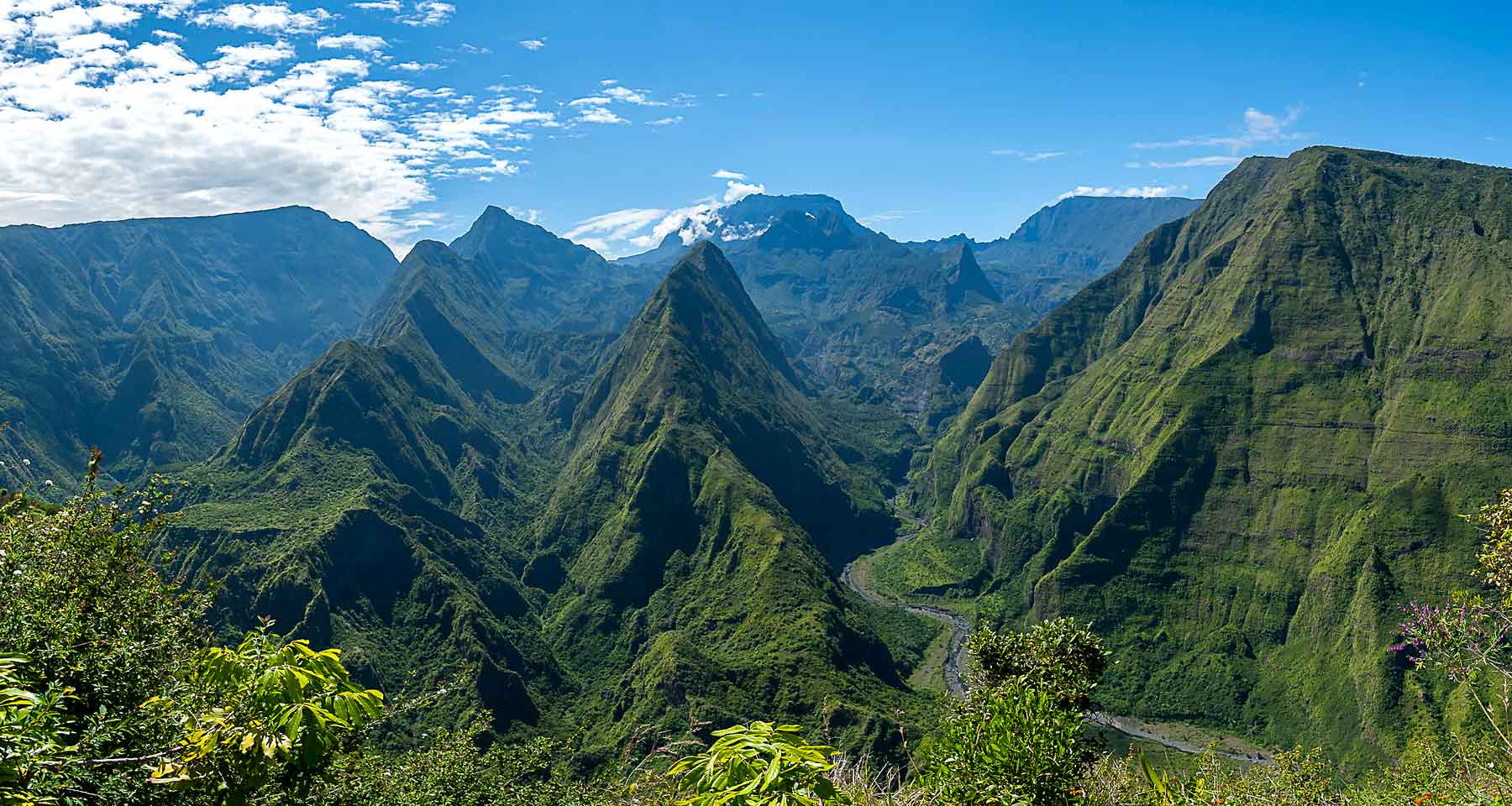
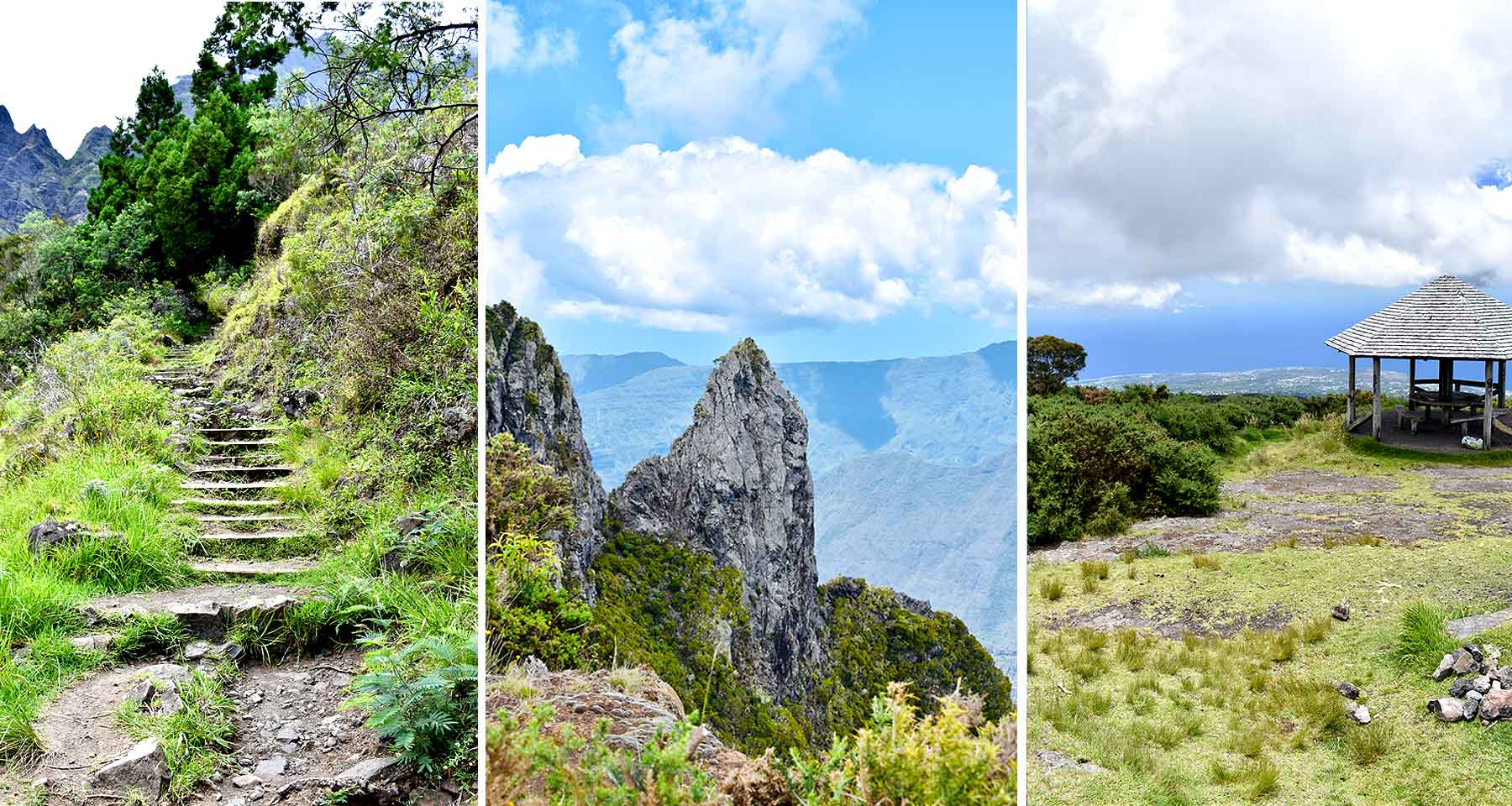
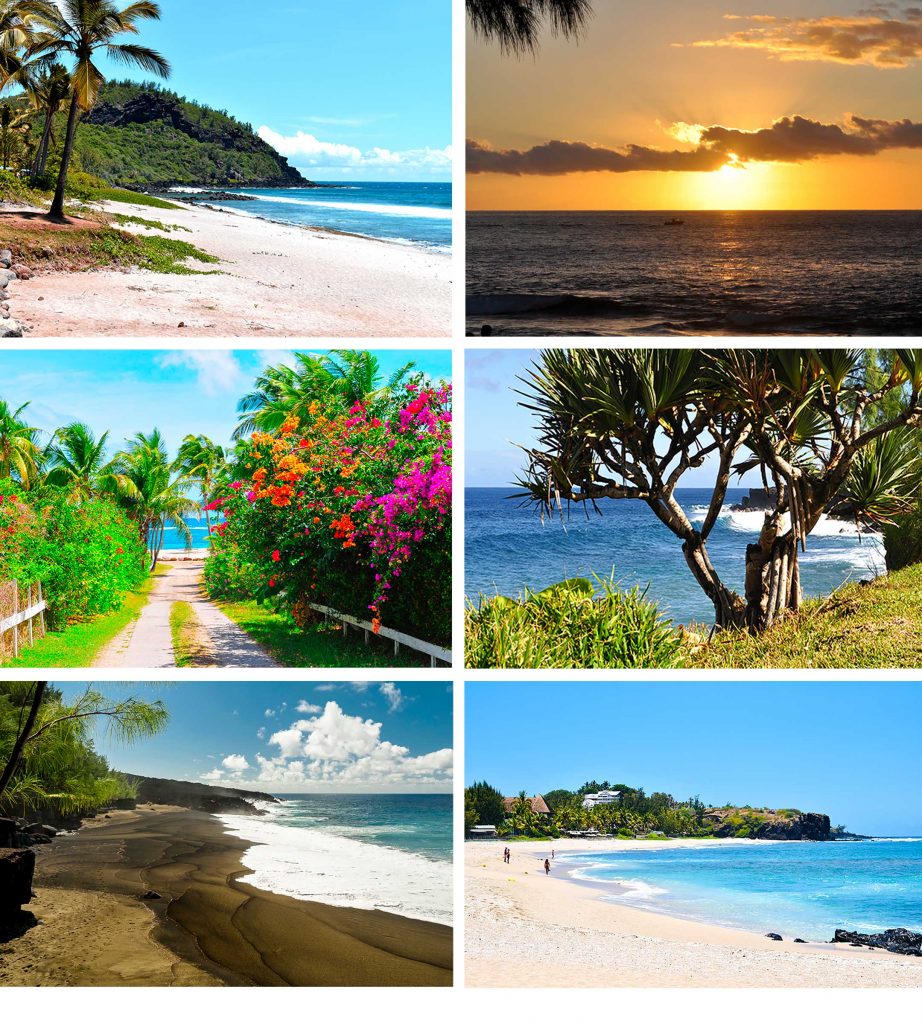
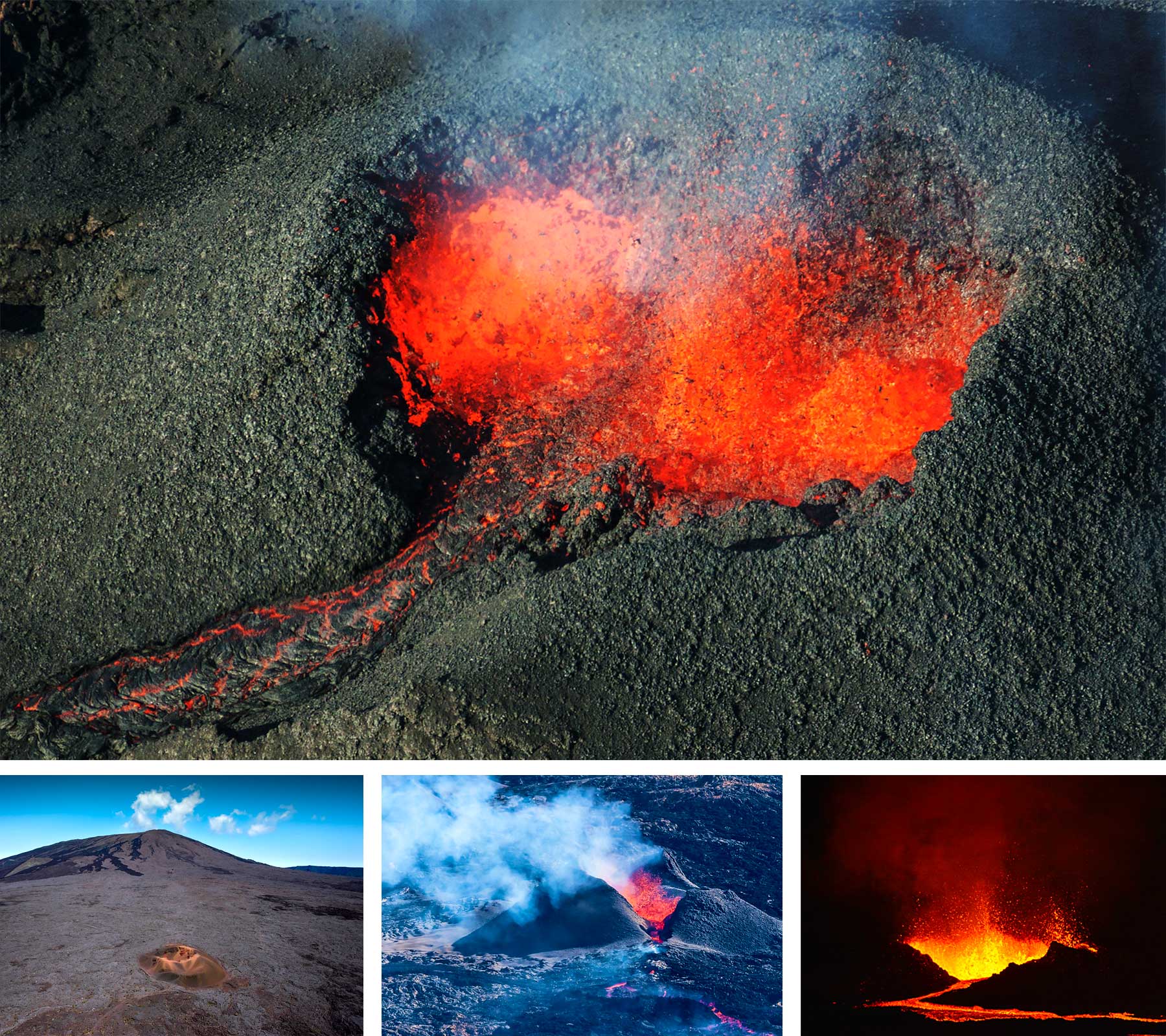


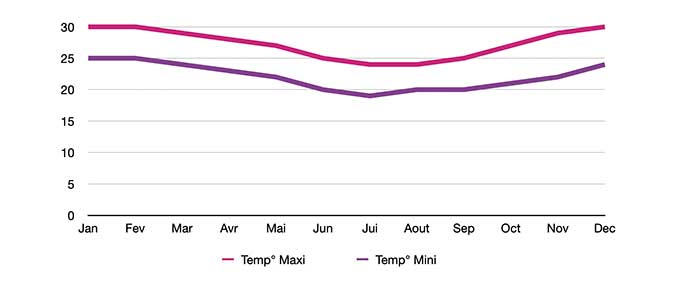
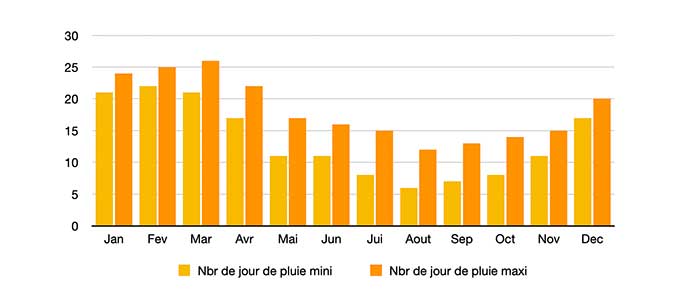
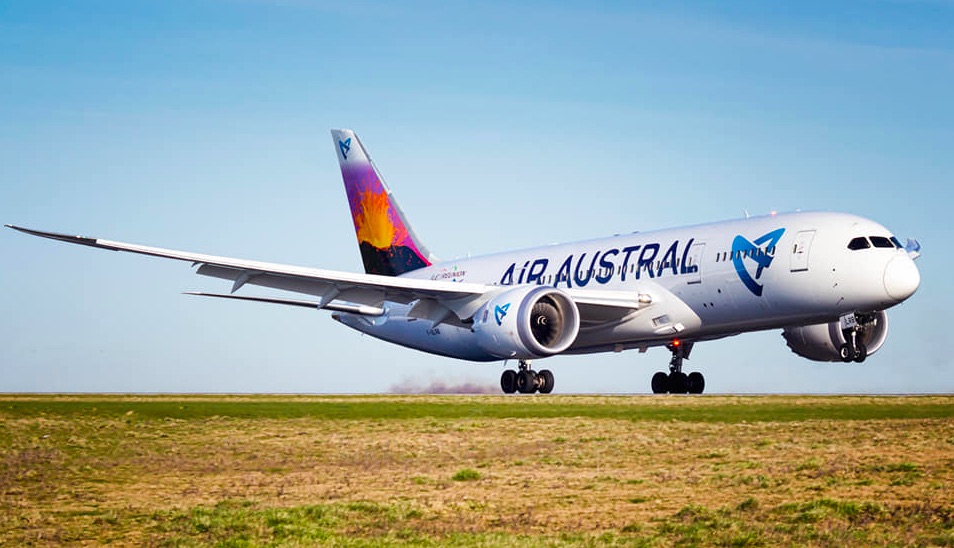




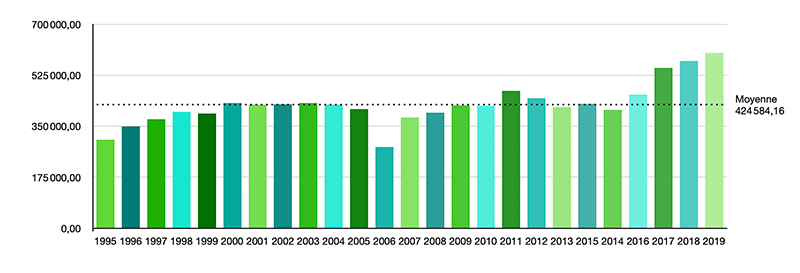
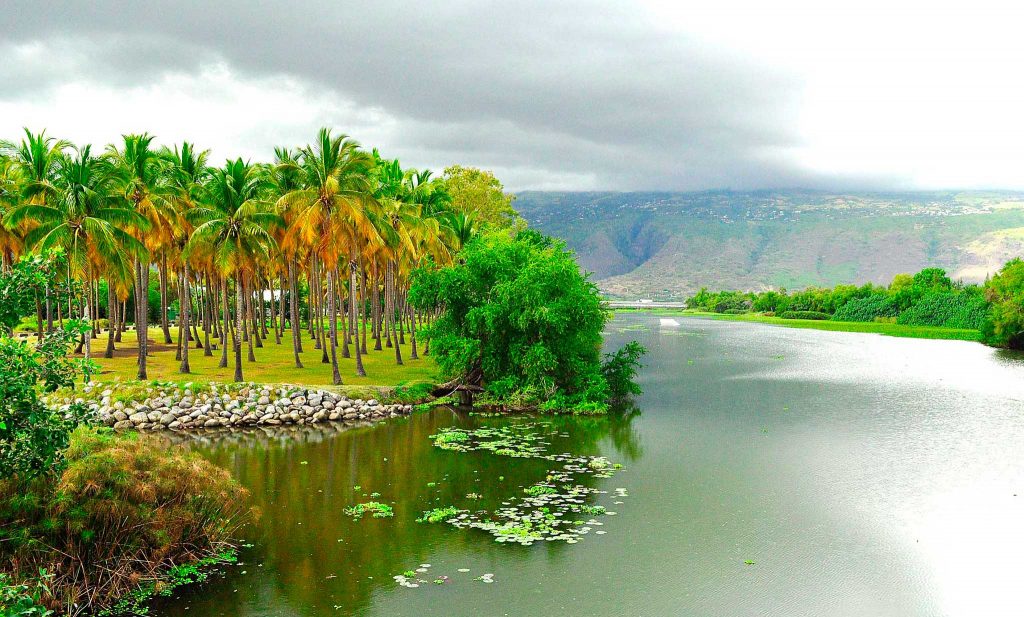
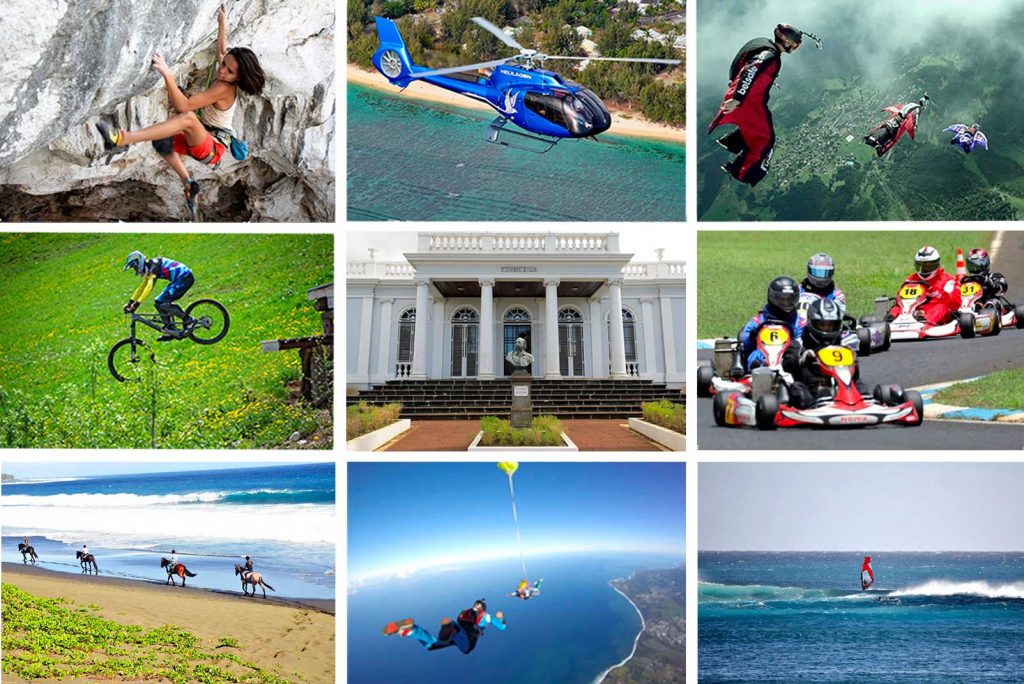

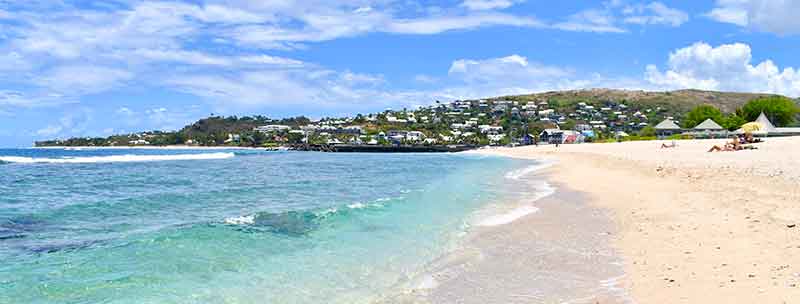

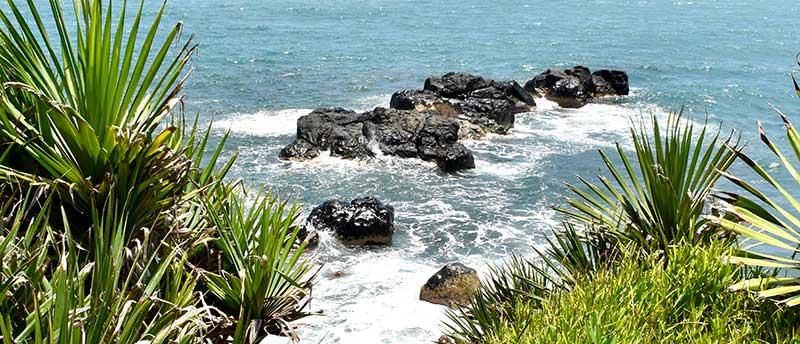

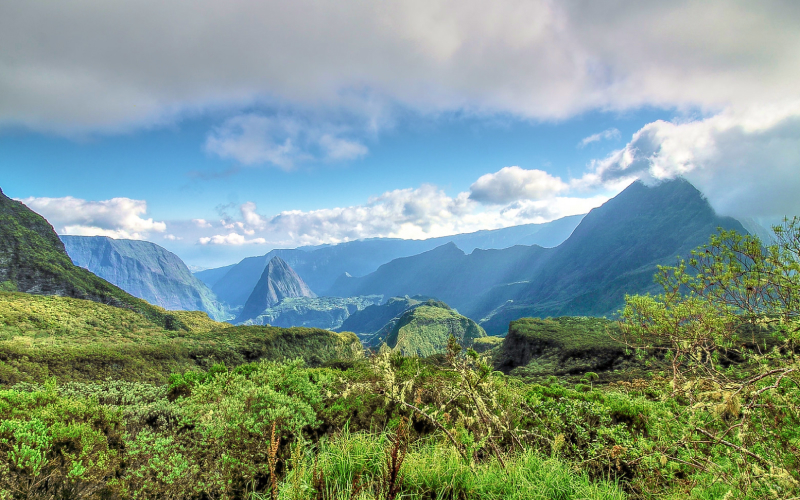

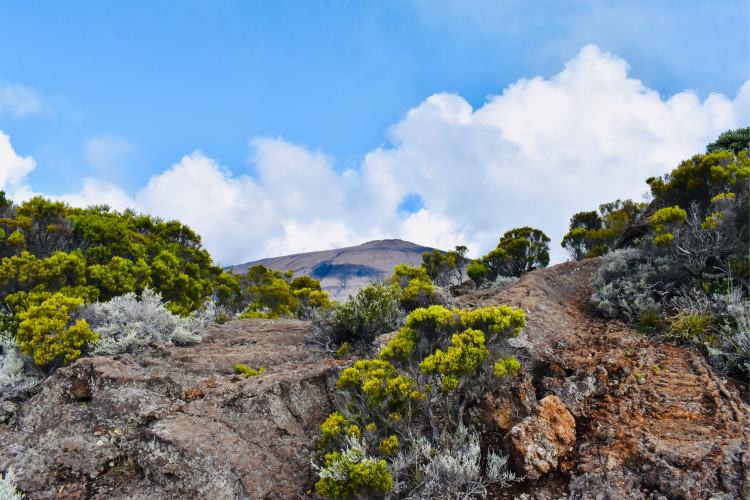
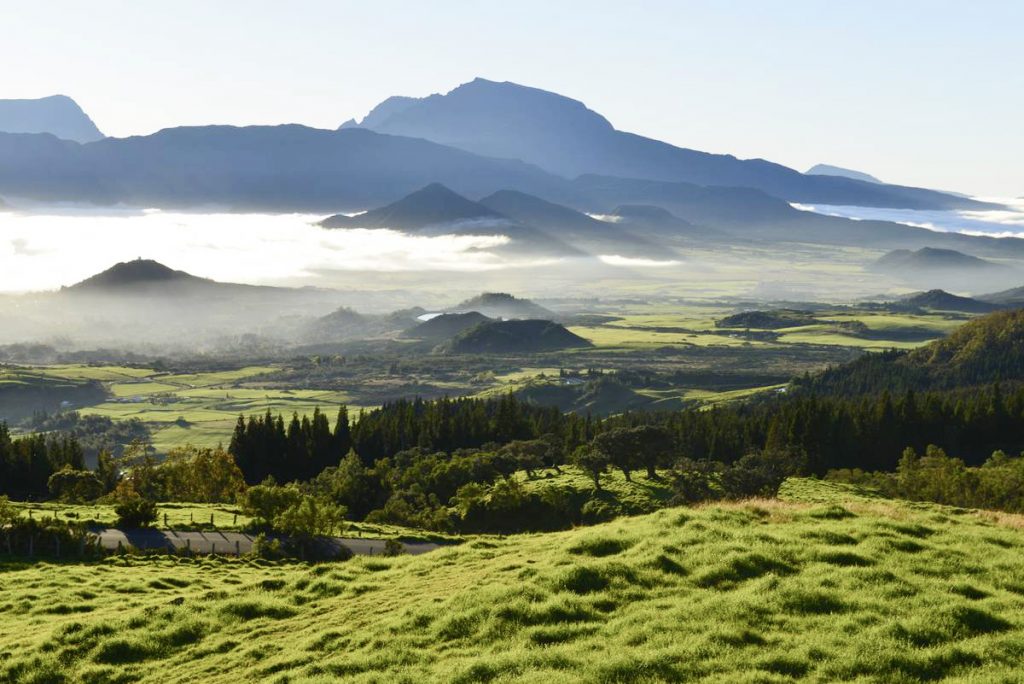
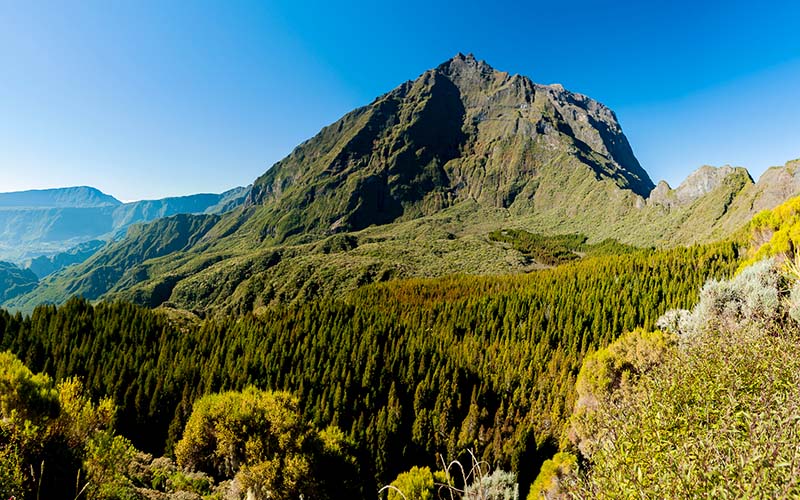

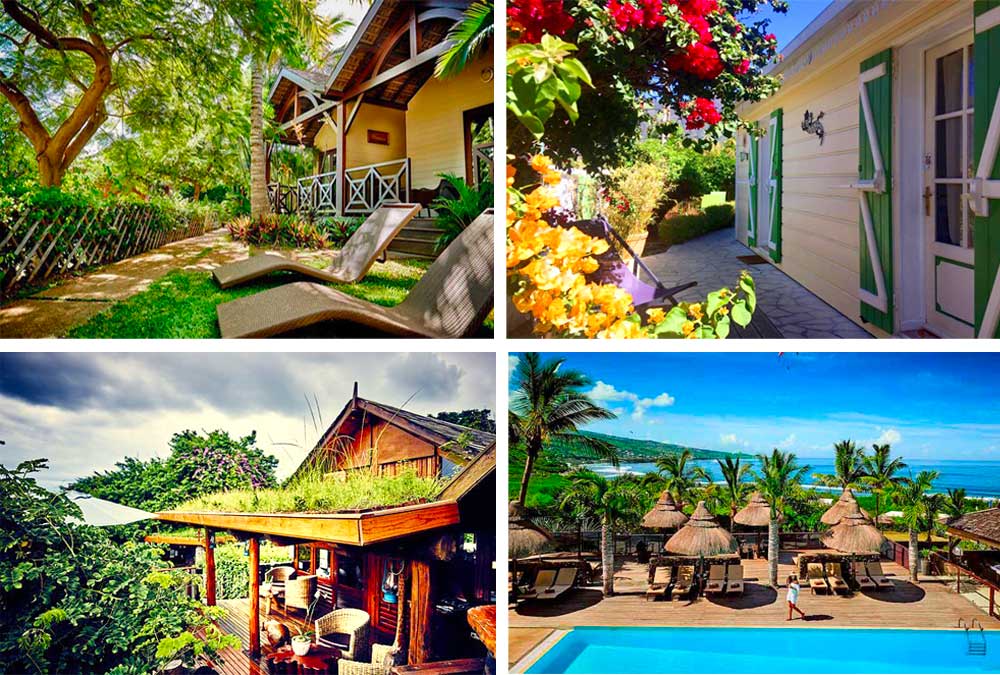

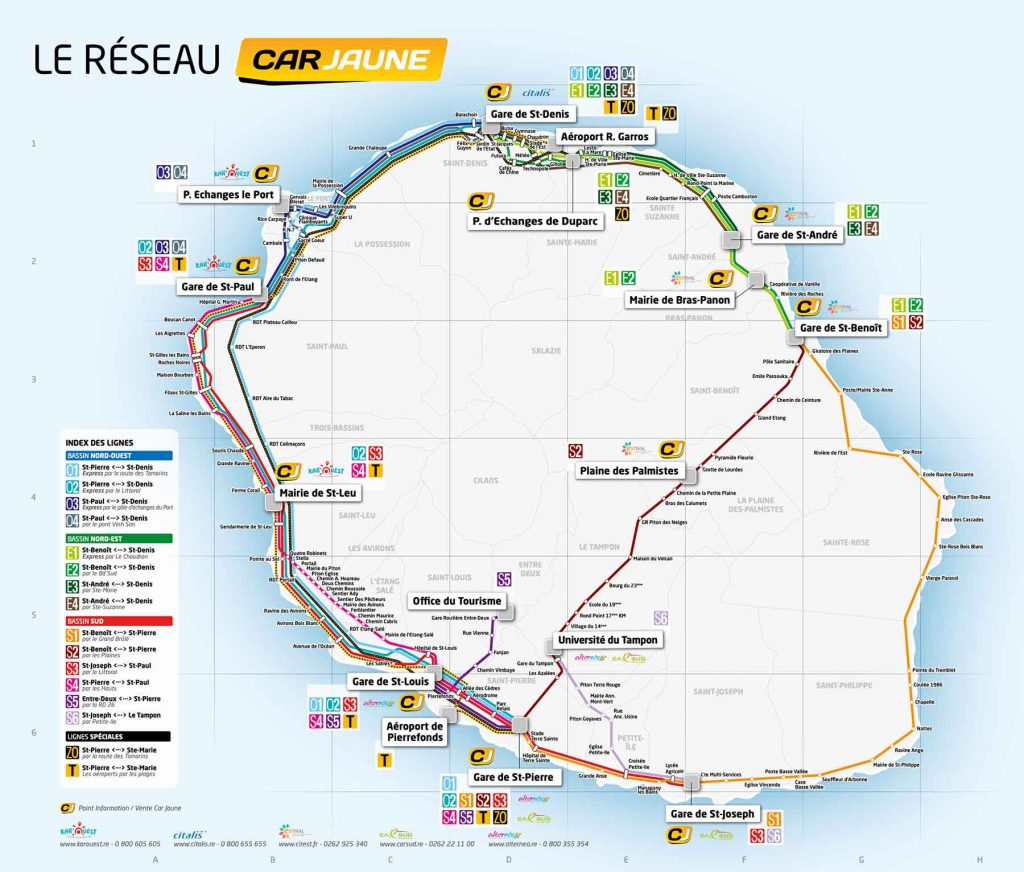
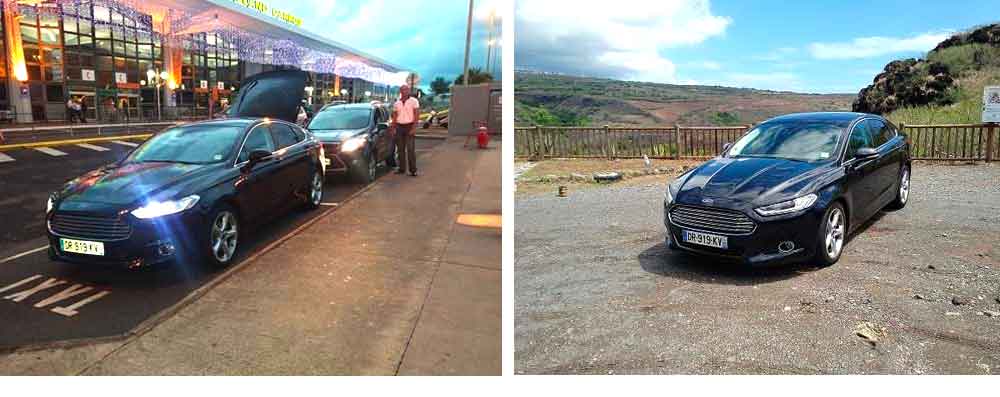
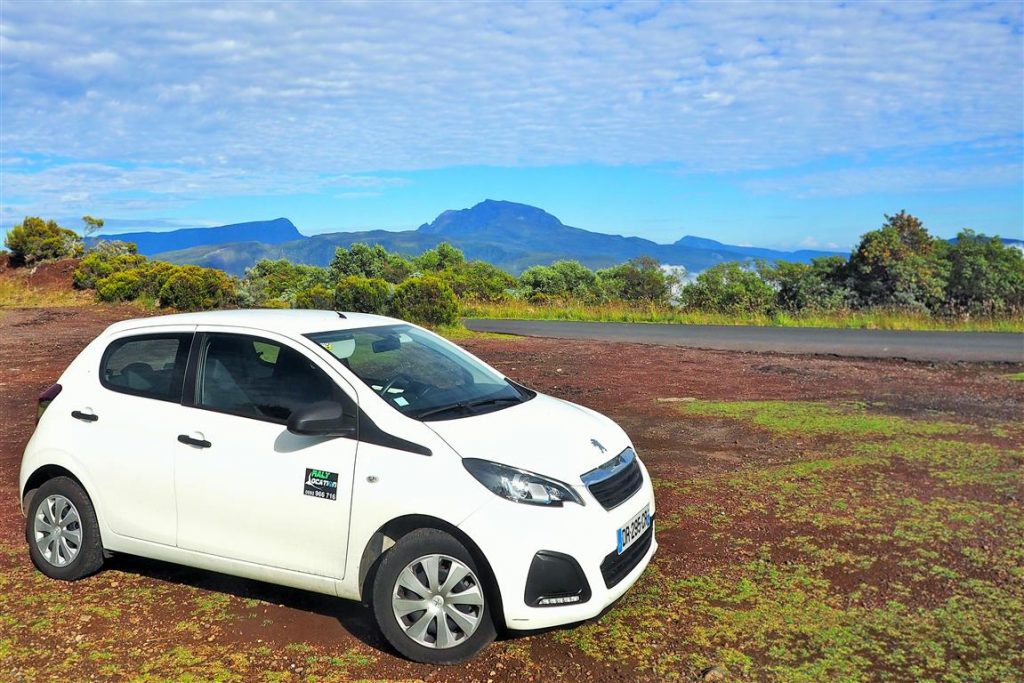
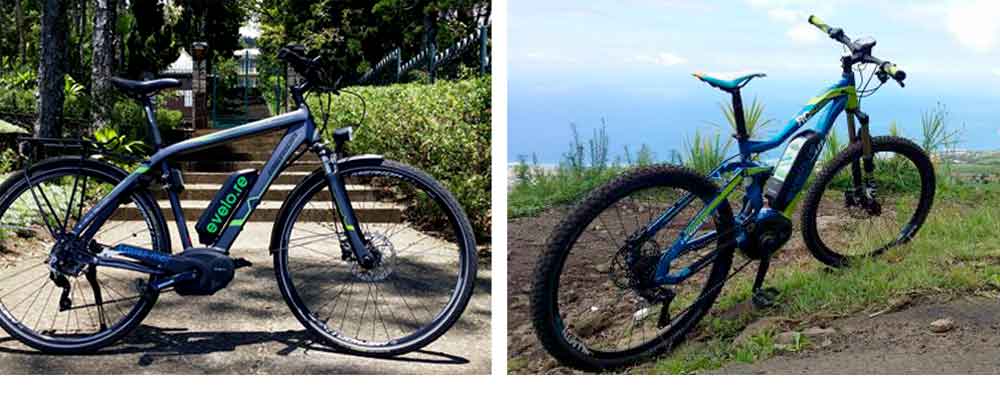
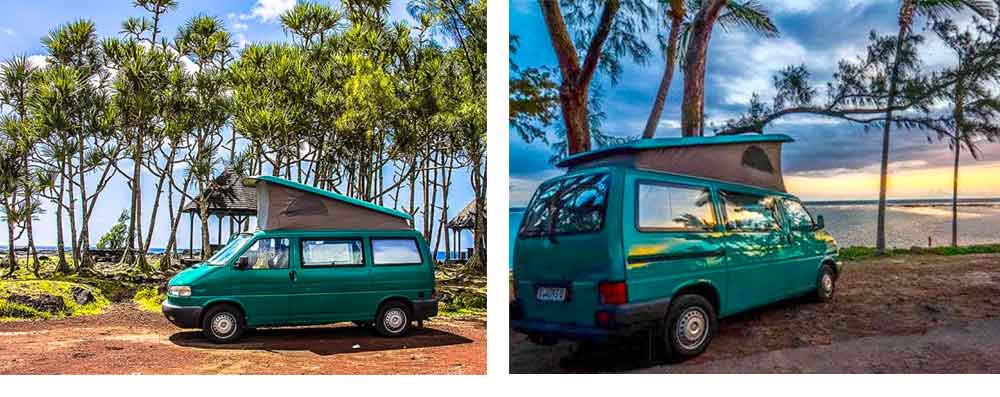

I love the meeting thank you for this beautiful presentation
Muito lindo tudo que vi. Quem fez essa apresentação maravilhosa?
Amei tudo.Pena não ter dinheiro para conhecer Reunion, pois esse seria meu sonho.
Um sonho distant, mas quem sabe em sonhos ...
Merci pour votre guide,il est ultra complet.
Je suis une zoreole revenue sur mon île 35 ans après. La Réunion est d’une beauté et intense.La mer,la montagne,la forêt,les la rivière. Les Réunionnais sont très accueillants.
Merci
Très bon guide je suis Réunionnaise mais je ne connais pas toute l’île elle est splendide je vous remercie pour le guide
Je suis ravie de lire le guide merci
merci
Super , voyage prévu pour septembre avec votre guide cela va me permettre de m organiser. Merci
Muito útil! Belo lugar💙